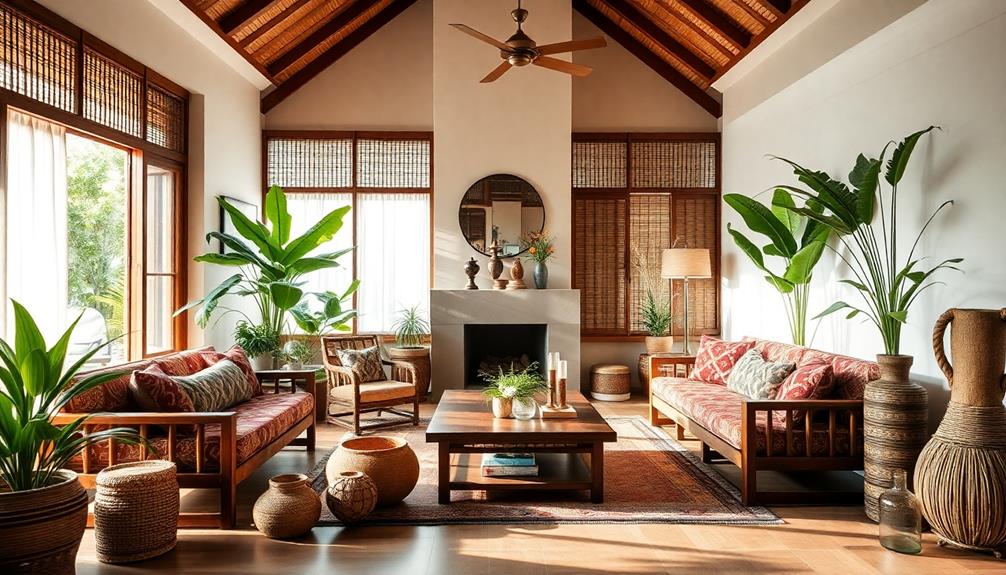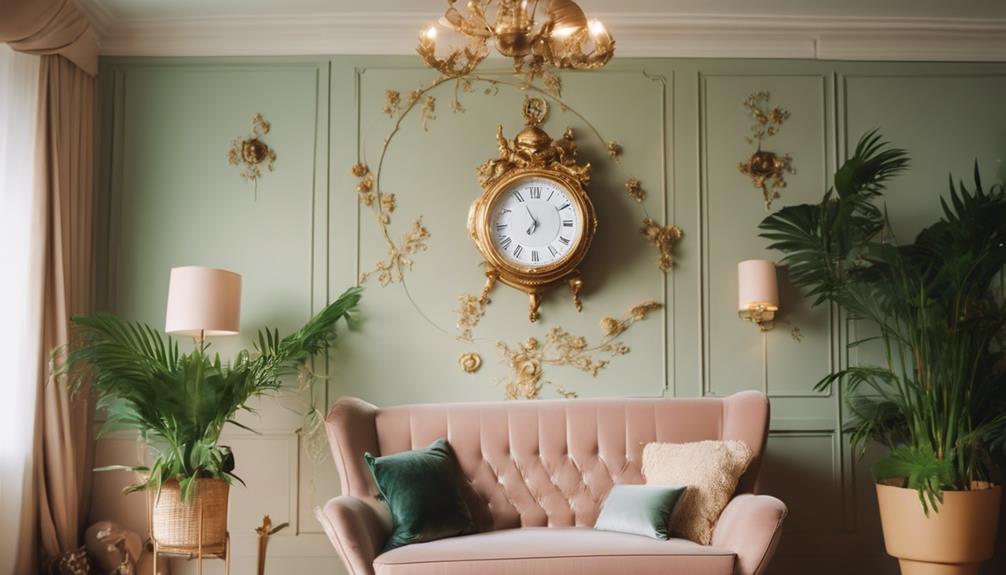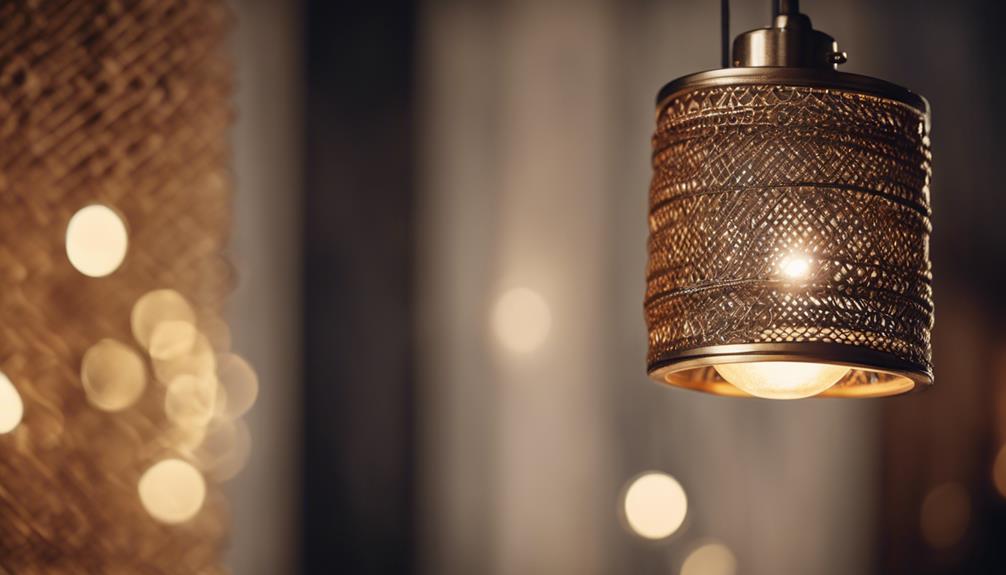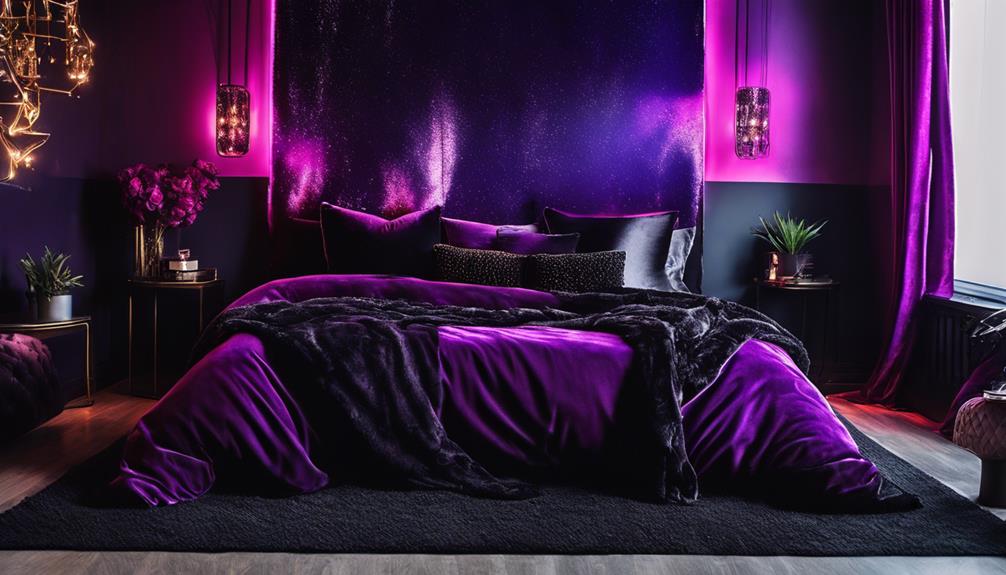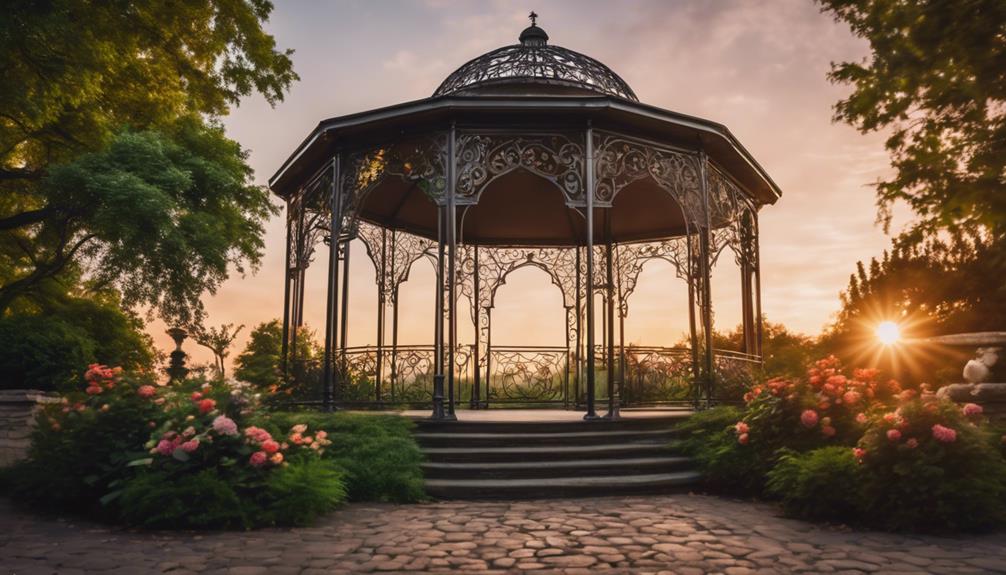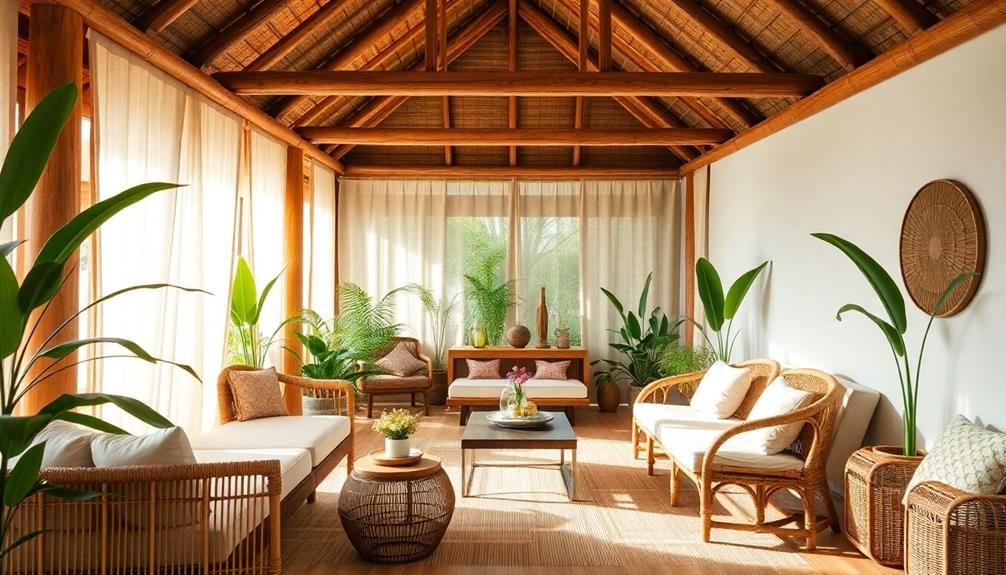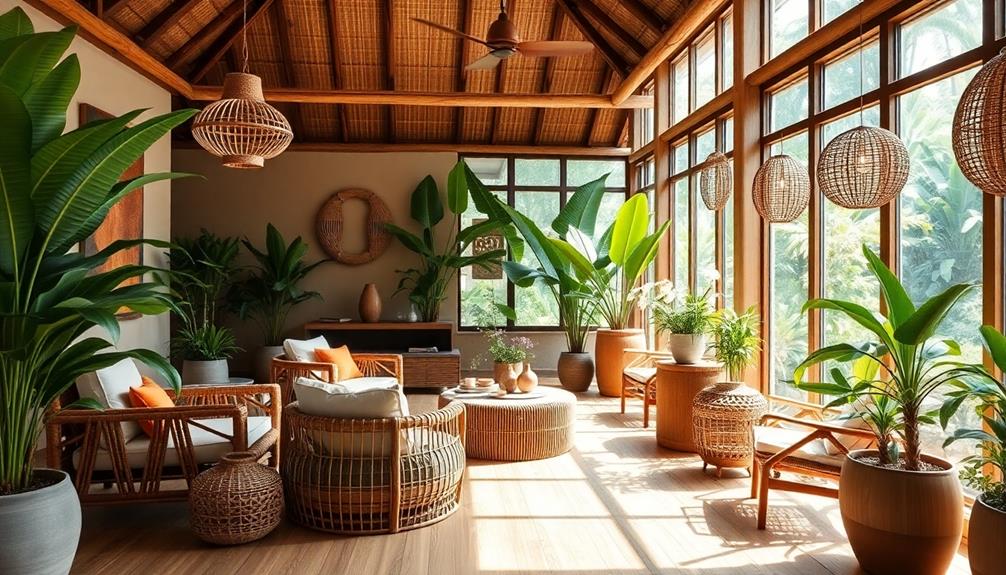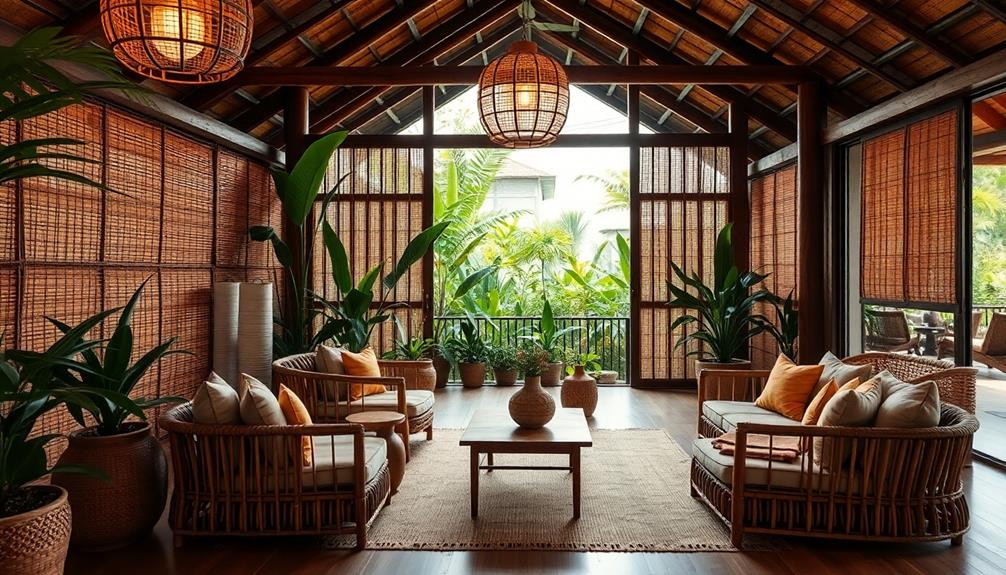Indonesian interior design captures the essence of the country's rich heritage through natural materials, vibrant colors, and cultural motifs. You'll notice hand-carved wooden furniture made from teak, and textiles adorned with striking Batik and ikat patterns. The use of earthy tones accentuated by bright accents creates inviting spaces. Open layouts promote seamless indoor-outdoor flow, while elements like tropical plants and water features enhance tranquility. Additionally, sustainable practices are key, emphasizing local craftsmanship and eco-friendly materials. This combination promotes a harmonious living environment that celebrates nature and culture. Want to explore more about this enchanting design style?
Key Takeaways
- Indonesian interior design emphasizes natural materials like wood, rattan, and stone, showcasing the region's biodiversity and traditional craftsmanship.
- Vibrant color palettes feature earthy tones and bright accents, reflecting Indonesia's cultural meanings and artistic heritage.
- Cultural motifs, such as Batik and wood carvings, narrate local stories and highlight the rich history and beliefs of Indonesia.
- Open layouts and nature-inspired elements promote seamless indoor-outdoor living, enhancing comfort and tranquility in spaces.
- Sustainable design practices focus on eco-friendly materials and artisan craftsmanship, supporting local communities and promoting environmental stewardship.
Natural Materials and Textiles
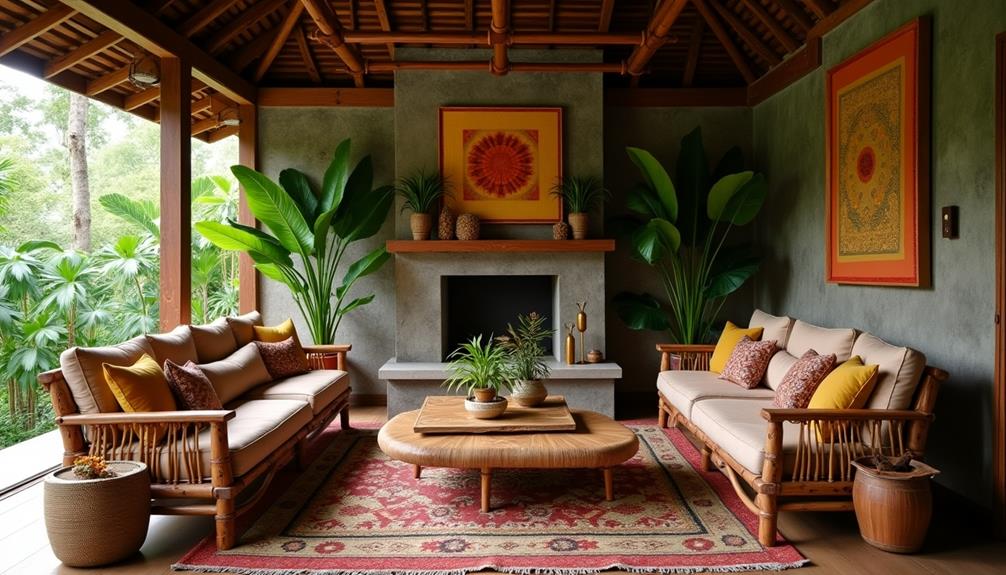
Indonesian interior design thrives on the use of natural materials and textiles, creating spaces that feel both warm and inviting.
You'll find that the incorporation of wood, rattan, bamboo, and stone reflects Indonesia's rich biodiversity and commitment to sustainable practices. Hand-carved wooden furniture, particularly from durable teak, showcases the skilled craftsmanship that's deeply rooted in traditional elements of Indonesian culture.
Additionally, vibrant colors and intricate patterns found in Indonesian decorative pillows can enhance the overall aesthetic of a space. Textiles play an essential role in this design ethos, with stunning batik patterns and ikat fabrics enhancing upholstery and decor.
These vibrant fabrics not only add aesthetic value but also tell stories of heritage and artistry. Rattan stands out as a versatile choice, used for furniture and decorative items, demonstrating its popularity in luxury outdoor markets globally.
Vibrant Color Palettes
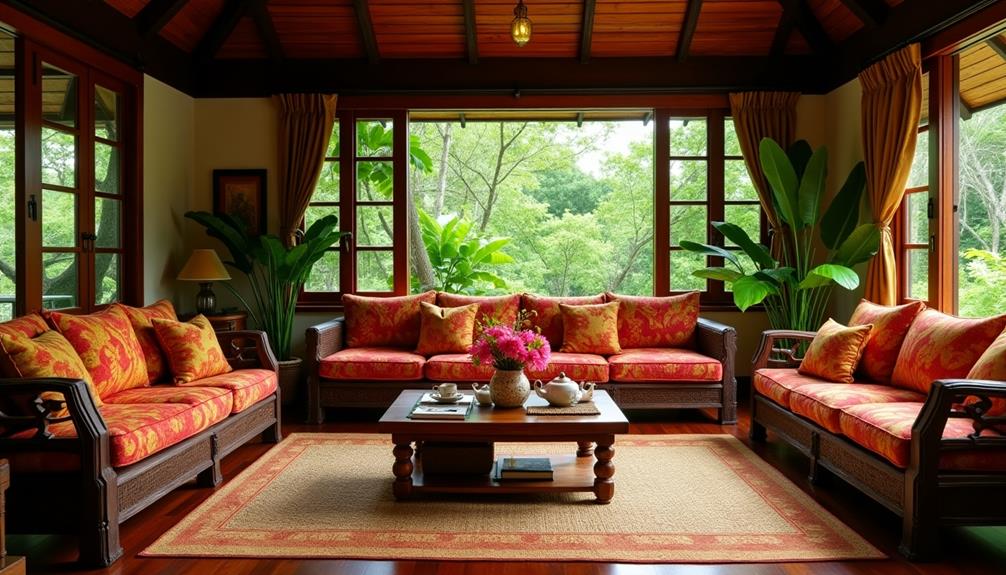
When you explore Indonesian interior design, you'll notice how vibrant colors carry deep cultural meanings, like red for passion and black for wisdom.
These hues harmonize beautifully with earthy tones, creating a balanced and inviting atmosphere.
Incorporating traditional elements like Indonesian decor masks can further enhance the aesthetic appeal of your space.
Cultural Symbolism in Colors
Embracing vibrant color palettes can transform your space, infusing it with cultural significance and emotional resonance. In Indonesian interior design, colors carry deep cultural symbolism, shaping the atmosphere of your home.
For instance, white represents purity and spiritual balance, while the earthy tones of brown and beige create a grounded environment. Additionally, incorporating elements like a unique Indonesian decor mask can further enhance the cultural richness of your decor.
Black symbolizes wisdom and stability, bringing a sense of depth to your decor. Meanwhile, red infuses energy and passion, adding dynamic visual interest to your living spaces.
When you incorporate yellow, you invite prosperity and fertility, making it a popular choice for accent pieces. Green, on the other hand, evokes nature and new beginnings, enhancing the tranquility of your surroundings.
Don't forget the bright accents of orange and turquoise, which infuse cultural flair, reflecting Indonesia's rich artistic heritage and diverse regional influences.
Harmonizing Earthy and Vibrant
A stunning blend of earthy and vibrant colors can transform your space into a culturally rich haven. In Indonesian interior design, earthy tones like brown and beige symbolize stability and warmth.
These hues serve as the perfect backdrop for vibrant accents in red, gold, orange, and turquoise, adding a striking cultural flair that energizes your environment. Incorporating natural materials like wood and textiles can further enhance this aesthetic, creating a connection to nature and local culture, as seen in traditional Indonesian style home decor.
You can further enhance the aesthetic appeal by incorporating colors like white, which represents purity, and green, symbolizing nature.
This combination creates a harmonious balance between vibrancy and tranquility, allowing your space to feel both lively and serene.
Don't forget to include traditional motifs, such as batik patterns, in your upholstery and decor.
This seamless integration of vibrant colors with timeless designs accentuates the overall scheme, enriching the narrative of your interior.
Cultural Motifs and Artifacts
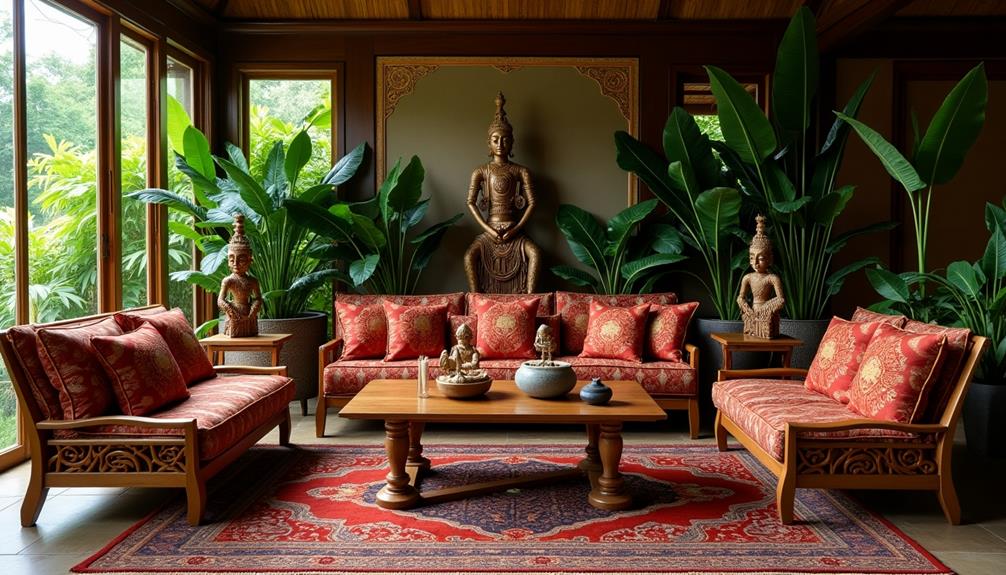
In Indonesian interior design, traditional craftsmanship techniques showcase the skill and artistry of local artisans.
You'll find that many cultural motifs carry symbolic significance, reflecting the rich history and beliefs of the Indonesian people.
Notable pieces, such as Indonesian decor masks, exemplify intricate designs that tell stories of local myths and folklore.
Traditional Craftsmanship Techniques
While exploring Indonesian interior design, you'll find that traditional craftsmanship techniques play an essential role in shaping the cultural identity of the region.
These methods, passed down through generations, create unique decorative pieces that reflect local customs and beliefs. The use of natural materials such as wood, stone, and bamboo is prevalent in these techniques, emphasizing sustainability and a connection to the environment.
Here are some key traditional craftsmanship techniques:
- Batik: A wax-resist dyeing technique from Java, producing intricate patterns in textiles and home decor.
- Rattan Weaving: Indonesia's largest producer of rattan, artisans create furniture, baskets, and mats using this versatile material.
- Wayang Puppets: Crafted using traditional methods, these leather and wooden puppets are significant cultural artifacts that blend art and storytelling.
- Wood Carvings: Prominent in Balinese architecture, these intricate carvings showcase spiritual and cultural narratives in statues, wall art, and furniture.
- Local Materials: Artisans utilize local resources, expressing Indonesian culture through various architectural elements.
Symbolic Cultural Significance
Symbolic cultural significance is deeply woven into Indonesian interior design, where traditional motifs and artifacts create a narrative that connects past and present.
You'll find Balinese motifs and Batik patterns adorning everything from pillowcases to carpets, enhancing the aesthetic appeal while telling stories of Indonesia's rich heritage.
Wood carvings, particularly from Bali, showcase intricate craftsmanship and reflect ancient tribal traditions, serving as luxurious decor items that add depth to your space.
Many local artisans, celebrated for their sustainable craftsmanship, create pieces that resonate with the values of eco-conscious consumers top shopping destinations.
Incorporating artifacts like Wayang puppets into your interior not only brings a unique touch but also symbolizes the evolution of cultural expressions from entertainment to art.
These elements highlight the cultural significance of Indonesia's artistic legacy.
Using natural materials like rattan emphasizes sustainability, resonating with eco-conscious consumers worldwide.
This versatile material, along with earthy tones, creates a grounded atmosphere that echoes the harmony with nature seen in traditional architecture.
Open Layouts and Flow
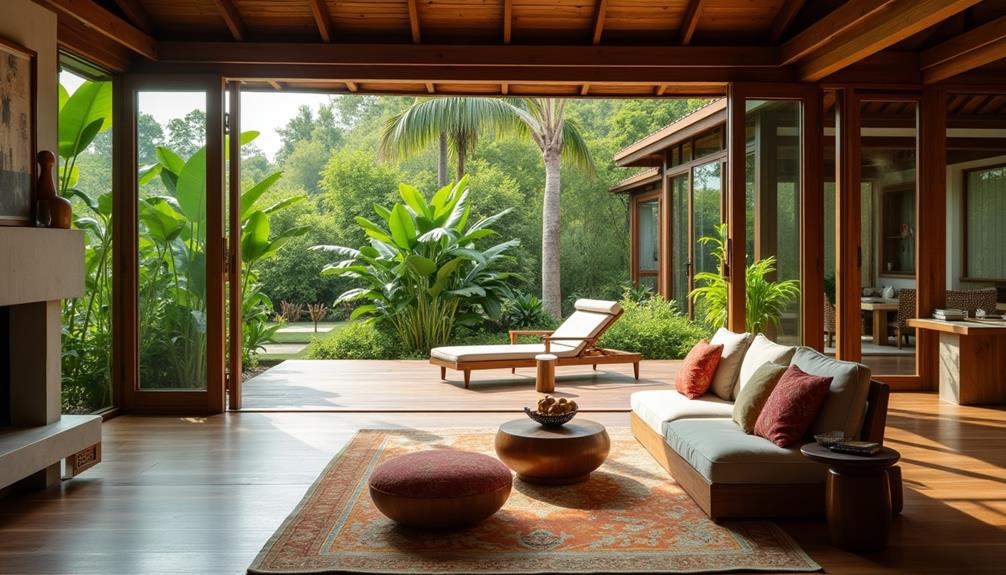
Emphasizing seamless shifts, open layouts in Indonesian interior design invite you to experience a harmonious blend of indoor and outdoor spaces.
These designs create a sense of spaciousness, allowing natural ventilation to flow freely throughout your home. Balinese homes exemplify this concept, as they blur the boundaries between distinct functional areas, enhancing comfort and accessibility.
This approach not only fosters a tranquil atmosphere but also aligns with the principles of tropical architecture, which prioritize sustainability and eco-friendliness.
Incorporating open floor plans encourages free movement and unobstructed views, making your living environment feel expansive and inviting.
Large windows and sliding doors help maximize natural light, forging a connection with the breathtaking tropical landscape just outside.
Here are some key features of open layouts in Indonesian design:
- Seamless integration of indoor and outdoor areas
- Natural ventilation for a revitalizing atmosphere
- Open floor plans promoting movement and interaction
- Large windows to invite sunlight and scenery
- Indoor gardens for tranquility and relaxation
Nature-Inspired Elements
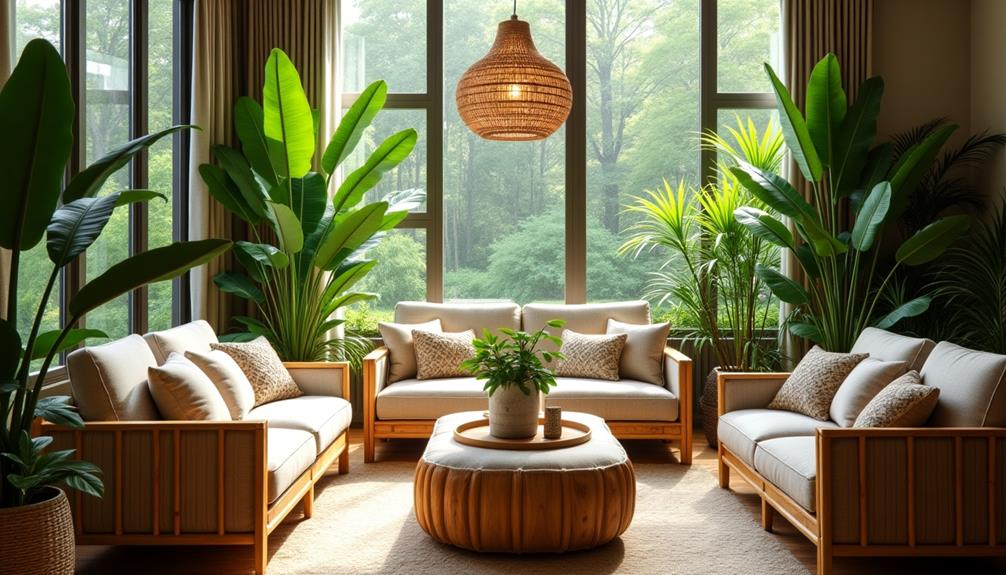
Nature-inspired elements play an essential role in Indonesian interior design, creating a serene and inviting atmosphere. You'll often find water features like ponds and fountains, which bring tranquility with the soothing sounds of flowing water. These architectural elements not only enhance the aesthetic but also promote relaxation in your living spaces.
Traditional Indonesian housing often emphasizes harmony with nature, as seen in the use of natural materials that reflect the rich biodiversity of the region. Tropical greenery, including indoor plants like palms and ferns, is another key aspect of this style. By incorporating these plants, you improve air quality and bring the beauty of nature indoors, further enhancing the natural feel of your spaces.
Designers frequently use natural materials such as wood, stone, and bamboo, grounding the overall design and reflecting the region's rich biodiversity. Large windows and open floor plans are common, allowing ample natural light to flood the interiors and fostering a seamless connection between indoor and outdoor environments.
The combination of nature-centric decor with traditional motifs results in a harmonious design that encourages peace and relaxation. Embracing these nature-inspired elements in your home will create a sanctuary that nurtures both your mind and spirit.
Sustainable Design Practices
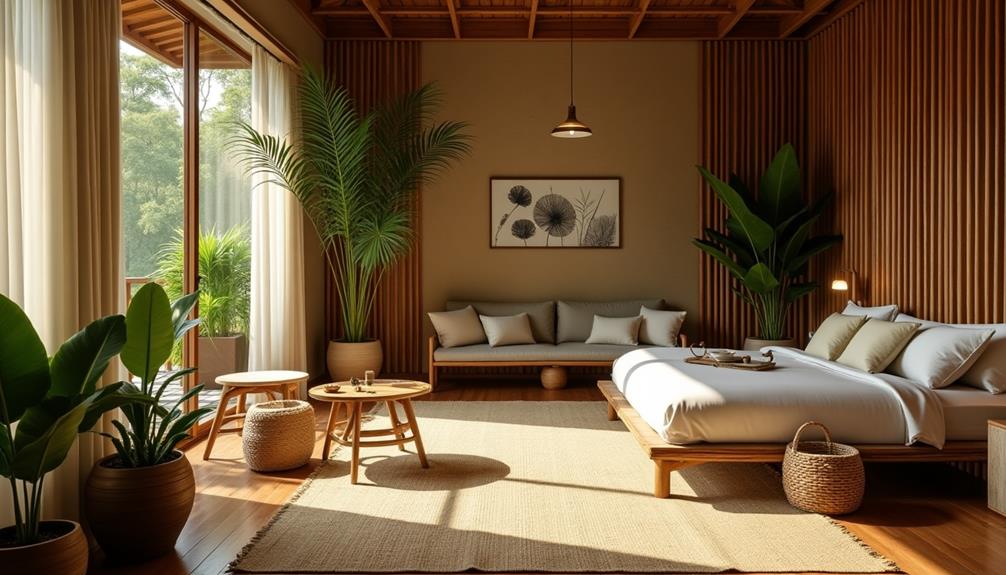
In the quest for a more sustainable future, Indonesian interior design is embracing eco-friendly practices that reflect a commitment to the environment.
You'll find that sustainable design practices are becoming increasingly prevalent, with designers incorporating eco-friendly materials like rattan and bamboo. These materials are often featured in Indonesian wedding decor ideas as well, promoting the use of renewable resources while minimizing environmental impact.
As you explore this vibrant scene, consider the following elements that highlight sustainability in Indonesian design:
- Energy-efficient solutions integrated into spaces, reducing energy consumption.
- Artisan craftsmanship that supports local communities and preserves traditional arts.
- A harmonious balance between beauty and ecological responsibility, ensuring aesthetics don't suffer for sustainability.
- The rising investment in sustainable design practices, indicating a growing market for eco-conscious designs.
- Environmental stewardship that encourages a mindful approach to consumption and design.
Frequently Asked Questions
What Are the Cultural Elements of Indonesia?
Indonesia's cultural elements include diverse traditions, languages, and art forms. You'll find rich storytelling through wayang puppets, intricate batik textiles, and vibrant festivals, all reflecting the nation's unique heritage and community values.
What Are the 5 Elements of Interior Design?
Ever wondered how to create a harmonious space? The five elements of interior design are space, line, shape, color, and texture. Each plays a vital role in crafting inviting, functional environments that reflect your style.
What Are the Essential Elements of Interior Design?
When considering essential elements of interior design, you'll focus on space, color, line, texture, and pattern. Each plays a critical role in creating a balanced and aesthetically pleasing environment that reflects your personal style.
What Are the Elements of Interior Design Style?
When you explore elements of interior design style, consider color, texture, and form. Each space should reflect your personality, balancing warmth and functionality while weaving in unique pieces that spark joy and inspire creativity.
Conclusion
Incorporating Indonesian interior design elements can transform your space into a breathtaking sanctuary. Imagine vibrant colors exploding on your walls, natural materials wrapping you in warmth, and cultural artifacts whispering stories of ancient traditions. You'll feel as if you've stepped into a lush paradise, where open layouts invite endless flow and nature-inspired touches breathe life into every corner. By embracing these key elements, you're not just decorating; you're crafting a masterpiece that celebrates the soul of Indonesia itself!
